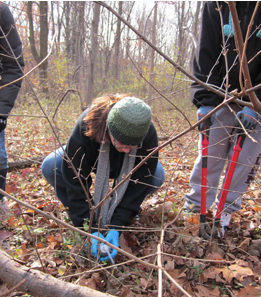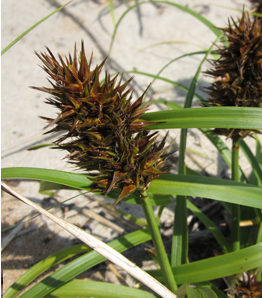Invasive Species
What Are Invasive Species?
Invasive species are introduced to an area outside of the natural range and often grow densely, excluding or severely impacting other species over large areas. Invasive species can be plants, birds, mammals, insects and other invertebrates, pathogens, etc.
Invasive species are especially tolerant of human disturbances, are generally free of natural enemies that would have hampered them in their native range, and produce lots of offspring, which gives them the ability to thrive and spread into new lands. Human actions are the primary means of introductions, be it through intentional introductions (landscape plantings or pet trade) and accidental instruction (packing crates and bilge water).
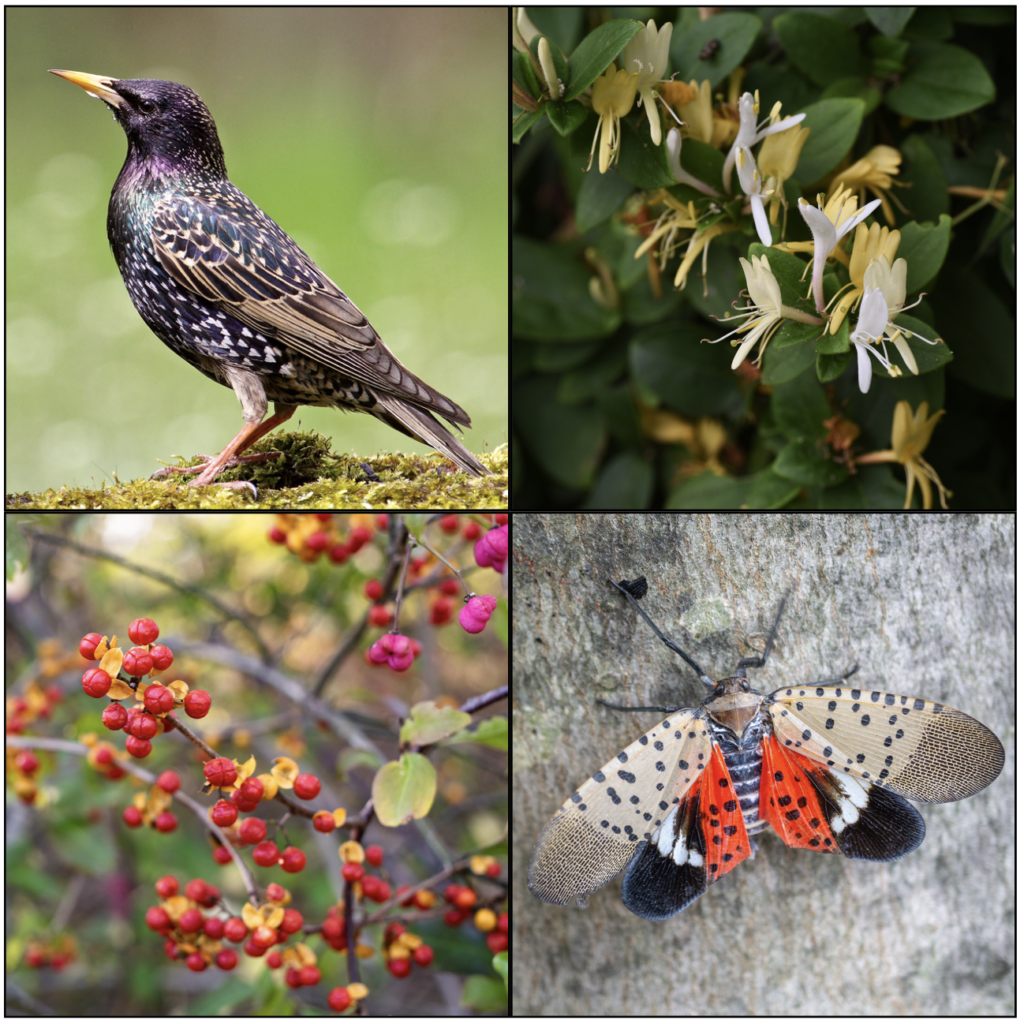
The State of Invasive Plants in New Jersey
There are ~1,000 non-native plants documented in New Jersey. While most are considered non-invasive, 134 species are invasive and another 65 show invasive potential due to future habitat changes and climate change. Around 60% are at Stage 0 or Stage 1 and elimination is possible due to low reported occurrences. Another 15% are at Stage 2 or Stage 3 and are spreading significantly. Complete elimination is no longer possible, and efforts should focus on preventing further spread. 25% of invasive plants are widespread, occurring in high densities across most of the state, making control difficult. Invasive species have become a considerable problem in New Jersey and in the Hopewell Valley because of three factors:
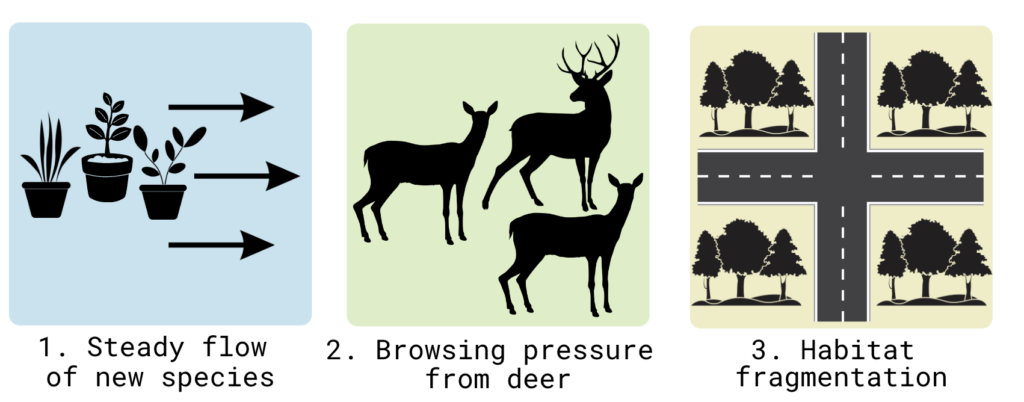
New species are constantly being brought in intentionally through garden centers or accidentally through travel. Intense fragmentation of habitat due to development creates disturbance and light gaps where invasive species thrive and outcompete native species. Through human influences, deer have become 10-15x more abundant than they were before European colonization. Non-native plants that deer do not eat have a tremendous advantage over native plants that deer have evolved to eat. Non-native plants that deer do eat are very unlikely to become invasive. It is important to note that invasive plants are not necessarily better competitors than native plants, they are just less yummy to deer!
What Is The Impact Of Invasive Species?
Invasives are considered the 2nd greatest threat to biodiversity worldwide with nearly 50% of rare native species directly impacted. Invasive plants suppress native plants that are relied upon by native animals, and therefore “break the food web”. Take for example, a recently abandoned land becomes a near monoculture of the invasive Autumn Olive, replacing many dozens of native wildflowers and shrubs. In May, Autumn Olive makes profuse flowers that feed hungry bees…but then the bees goes hungry for the rest of the year! In fall, Autumn Olive makes tremendous crops of fruit eaten by many birds, but those birds cannot find fruit in those fields until the following fall! Plus, caterpillars and other insects cannot eat the Autumn Olive leaves, leaving birds without high-protein food while they are nesting in spring and summer.

Compare that to a full diversity of native species that provide nectar, pollen, fruit and insects all year long making for a full and healthy food chain. In short, invasive plants replace native plants, leaving native animals with nothing to eat for the majority of the year.
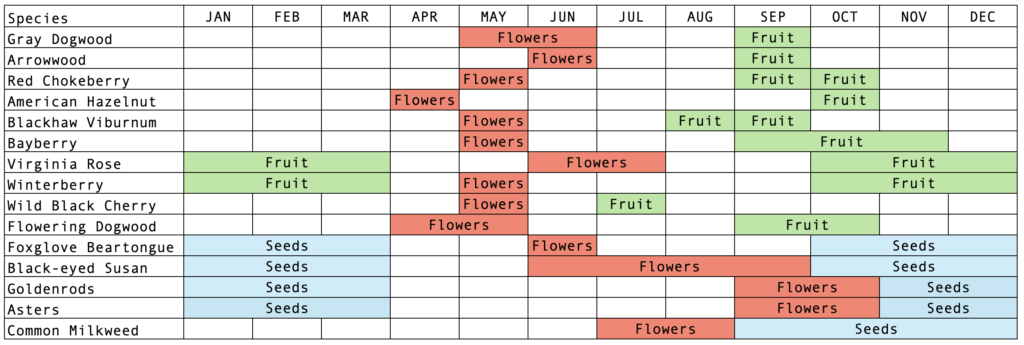
The threat is not only ecological, but also economical: it is estimated that invasive species cost $120 billion in environmental damages and losses in the United States every year1.
Defining the problem is simple…
For Invasive Plants: A relatively small number of non-indigenous species take up large amounts of space that would otherwise be occupied by a diversity of native species, leading to negative impacts on native plants and animals.
For Invasive Animals: Invasive animals, insect pests and pathogens, cause significant damage through the degradation of whole native systems or through competition and predation of native species.2
Achieving control is difficult… but a group effort!
While invasive species that are widespread are unlikely to be eliminated, there are about 30 newly emerging invasive plant species that can be eliminated if we work together! We can use everybodies help to learn these species and report them when found using our phone app. We provide technical guidance for control efforts through our control recommendations by target species list and our herbicide mixing table guide to private landowners, volunteer stewardship teams, conservation groups, and governmental land stewards and are always available to discuss at mvanclef@fohvos.org.
1 Pimentel, David, Rodolfo Zuniga, and Doug Morrison. “Update on the environmental and economic costs associated with alien-invasive species in the United States.” Ecological economics 52.3 (2005): 273-288
2: NJ Strategic Management Plan for Invasive Species
Technical Guidance
Learn about methods employed by the Strike Team to eliminate invasive plant species and information about herbicide use.
Species Fact Sheets
View our fact sheets for information on identifying individual invasive species.
Volunteer Stewardship Teams
Check out how our volunteer teams are making a difference one park at a time!

